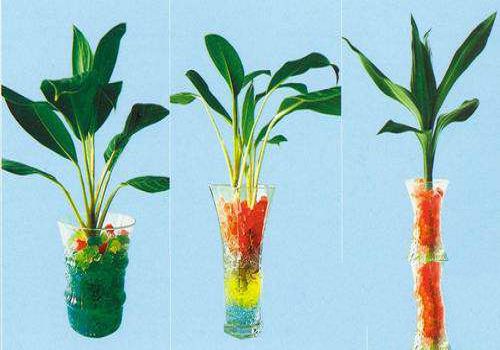Grafting Propagation techniques of Flowers
Grafting is a propagation method in which a part of a flower's organs (branches or buds, called scions) are grafted onto another flower (rootstock) to make it heal and synthesize new plants. Scions generally select excellent varieties, rootstocks are generally wild species or seedlings. The rootstock has developed root system and strong growth, and the scion grafting of excellent varieties can make the plant grow vigorously. There are four methods of grafting: branch grafting, flat grafting, bud grafting and leaning grafting.
Branch grafting: branch grafting is generally carried out in spring, and it is divided into cutting and splitting. Cutting is suitable for rootstocks with stems of 1 cm to 2 cm. The method is to select the growing branches, cut the segments of about 6 cm, leave 3 buds in each segment as scions, and wrap them with a wet cloth. When grafting, one side of the lower end of the scion is cut into a long slope of about 2 cm, and the other side is cut into a short slope. Cut the rootstock from a height of 5 cm above the ground and make a straight and smooth cut with the same length as the cut of the scion. Then insert the scion directly into the cut of the rootstock, combine the two closely, tie them tightly with a belt, and then cover them all with soil around them, exposing only the buds at the top, so as to reduce the evaporation of water at the joint. Split grafting is suitable for thicker rootstocks, the method is as follows: cut off the upper part of the rootstock, cut the same slope (contract shape) on each side of the lower end of the scion, then insert the cut into the rootstock, fasten and fix the joint, cover the soil around it, and only expose the top buds to ensure that the water is not lost, which is conducive to survival.
Butt grafting: butt grafting is made by cutting the base of the scion and the top of the rootstock into a smooth plane, pressing each other tightly and fastening it with thread. The best size of the rootstock is about the same size as the scion cut, and the center point should be aligned. This method is often used for the reproduction of cactus flowers.
Bud grafting: the T-shaped method is often used in bud grafting. First select the annual branches with full lateral buds, remove the leaves, and cut a knife across the top of the lateral buds, and then cut off slightly with xylem from the bottom up, and the buds are shield-shaped. Then draw a T-shaped incision in the shade of the rootstock 5 / 6 cm from the ground, pick the lower end of the incision with the knife tip, insert the bud piece, align the upper end of the bud piece with the horizontal knife edge bark of the T-shaped incision, expose the petiole and bud, and then tie it tightly with the belt. This is usually carried out in late summer and early autumn.
Lean on: rely on commonly used magnolia and other flowers that are difficult to reproduce. Because the grafted scion is not cut away from the mother plant, it is still supplied with water and nutrients by the mother plant, so it is easier to survive. When leaning on, first put the rootstock on the basin, close to one side of the mother plant, and then cut a side branch of the mother plant and the rootstock into a section about 4 cm long, which is deep to the xylem, so that the cambium of the two are attached to each other, and then fasten them with plastic film strips. After the cut surface is healed, the scion is cut off from below the junction, and at the same time the upper part of the rootstock is cut off to become a new plant.
Related
- What if the leaves of potted flowers turn yellow?
- Florescence Control of several Flowers
- Anti-freezing technology and post-freezing nursing technology of flowers
- What is the classification of flowers? What are the common methods of flower classification?
- Prevention and control of alkali and acid damage of flowers in courtyard
- Technology of Anti-freezing and restoring growth of Flower seedlings in greenhouse and greenhouse
- How does flower fertilization not hurt the root? Fertilization technology of flowers
- Key points of disinfection in flower greenhouse
- Several pesticides that are banned or used cautiously in flowers
- How to fertilize the flowers that watch the leaves?



